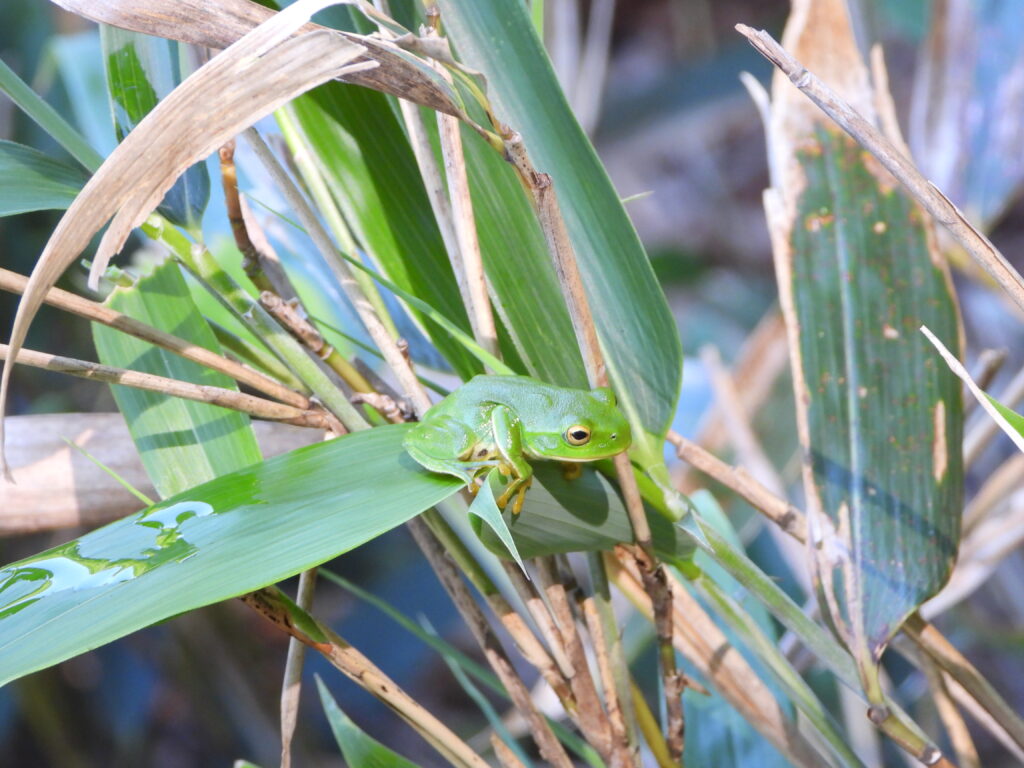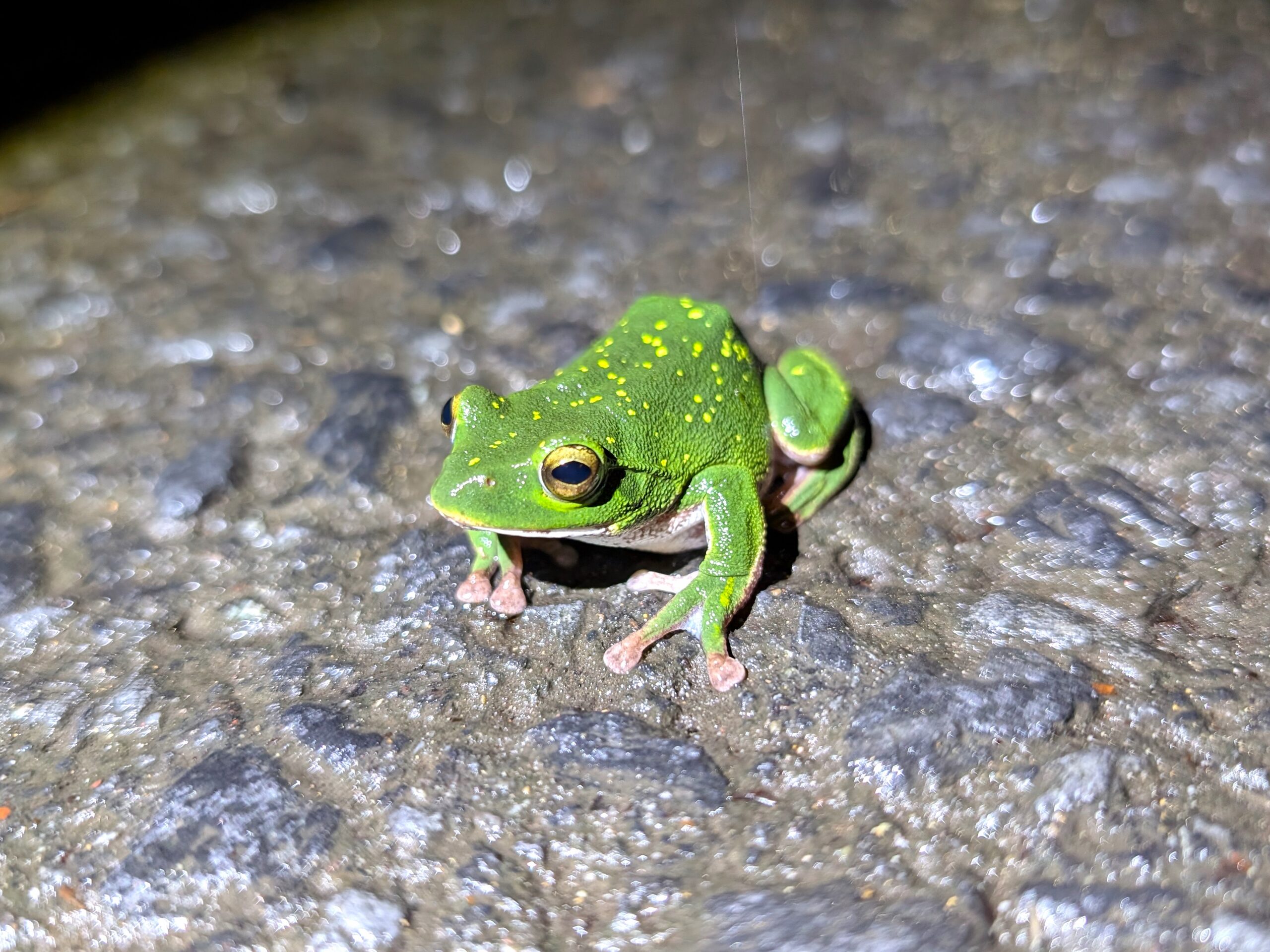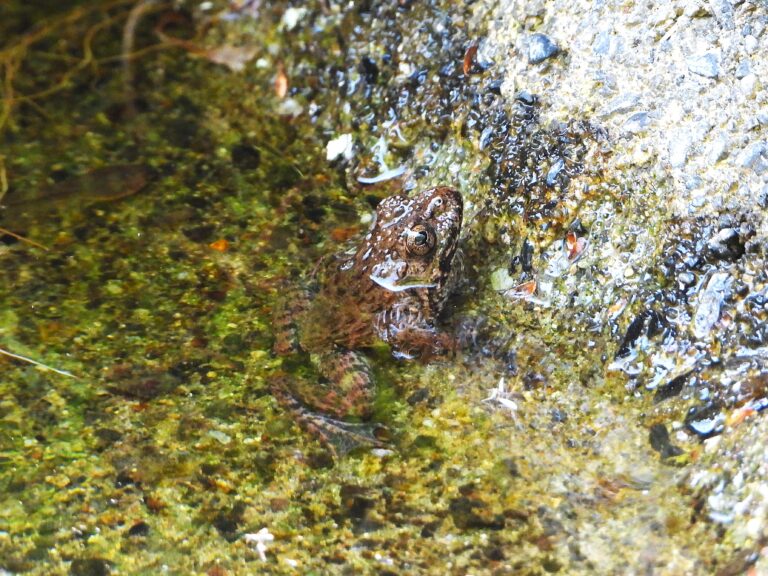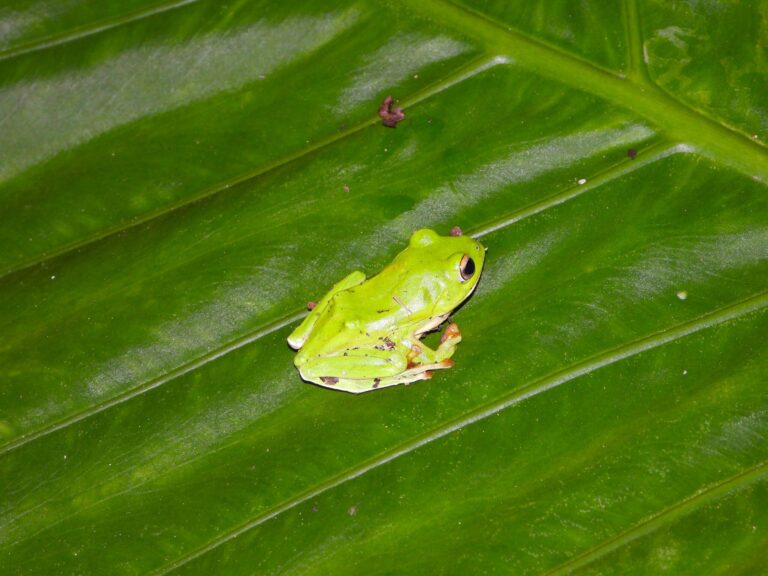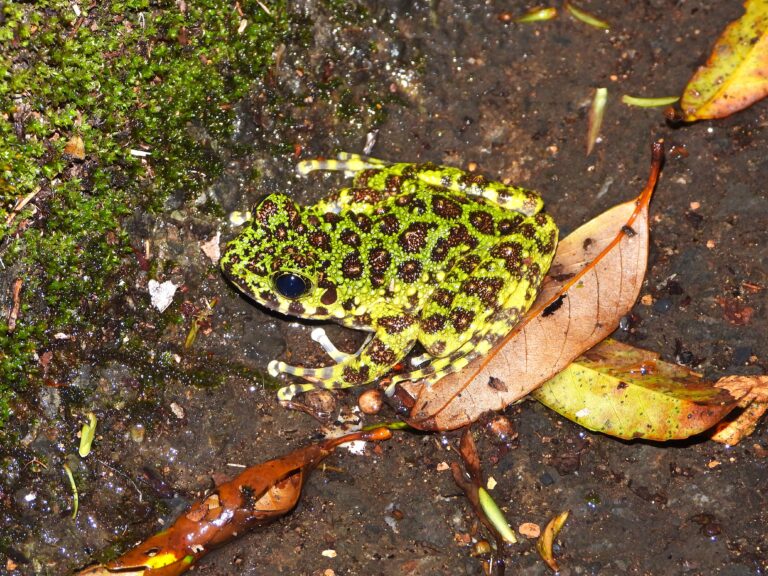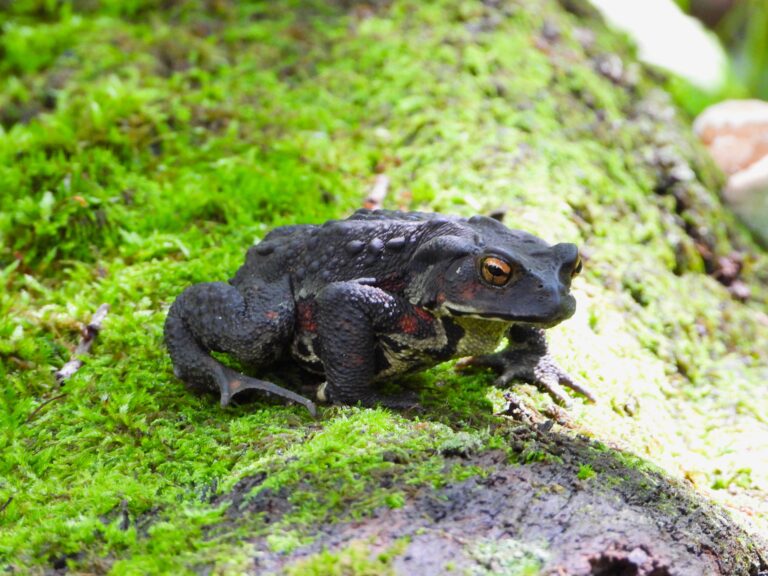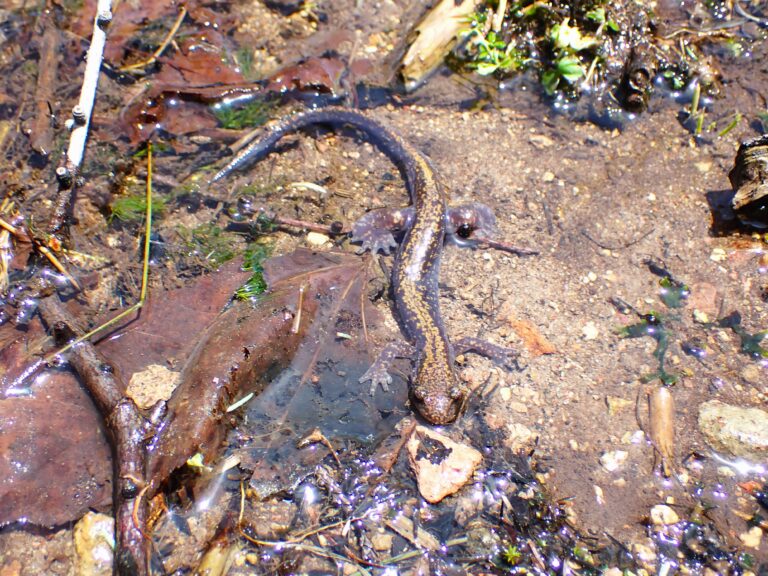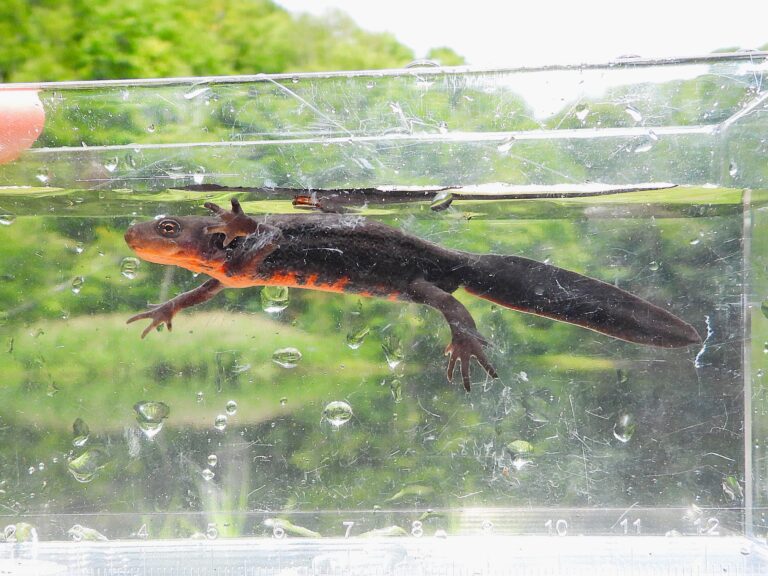Schlegel’s Green Tree Frog (Zhangixalus schlegelii) – Wildlife of Japan
Introduction
The Schlegel’s Green Tree Frog (Zhangixalus schlegelii) is a small, leaf-green amphibian endemic to Japan. Perfectly blending into rice-field margins and forest edges, it is far easier to hear than to see—an iconic voice of spring and early summer nights.
Appearance
Adults measure about 3–5 cm. The body is smooth and yellowish-green to bright green, with subtle individual variation. Eyes are horizontal and the snout is rounded. Unlike the Japanese Tree Frog, there is no dark stripe running from the snout through the eye.
This species is sometimes confused with the Forest Green Tree Frog (Zhangixalus arboreus, “Moriao-gaeru”). Schlegel’s is smaller (around 3–5 cm), typically occupies lowland rice-paddy landscapes, and its typical nest is built in the ground. In contrast, the Forest Green Tree Frog can grow larger (up to about 8 cm), favors montane forests, and famously produces large arboreal foam nests on branches overhanging ponds.
Habitat
Widely distributed across Honshu, Shikoku, and Kyushu, with records also from parts of the Ryukyu Islands. It favors lowland wetlands—rice paddies, irrigation ditches, vegetated ponds—and forest edges. By day, individuals rest on leaves or tree trunks where their coloration provides excellent camouflage.
Behavior
Mostly nocturnal. At dusk they climb grasses and shrubs near water. During the breeding season their soft, rolling trills carry across paddies, especially on humid nights.
Diet
They feed on small invertebrates—primarily insects and spiders—helping regulate insect populations in paddy-land ecosystems.
Reproduction
Breeding generally peaks from late spring into early summer. Unlike its arboreal cousin Z. arboreus, Z. schlegelii commonly constructs foam nests in shallow burrows in the soil of paddy banks or ground near still water. Eggs develop within the foam; when liquefied, the mass drains into adjacent water, carrying the tadpoles, which then develop until metamorphosis.
Conservation
Assessed as Least Concern and locally common where traditional paddy landscapes persist. Long-term risks include loss or abandonment of rice fields, wetland conversion, and pesticide use. Maintaining vegetated pond margins and low-chemical farming practices benefits this species.
Author’s Impression
From late April to June I often follow their gentle chorus to spot one clinging to a leaf or resting on a trunk. Masters of camouflage—search stems and the backs of leaves carefully, and let the call guide you. It’s a small moment that captures the quiet magic of rural Japan.
Taxonomy note: Formerly placed in Rhacophorus; major references (ASW/AMNH, AmphibiaWeb, Japanese Herpetological Society list) now treat the species as Zhangixalus schlegelii (synonym: Rhacophorus schlegelii).
